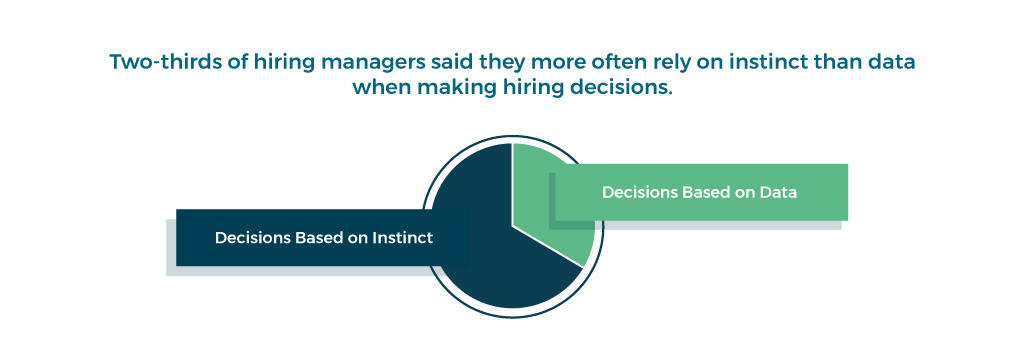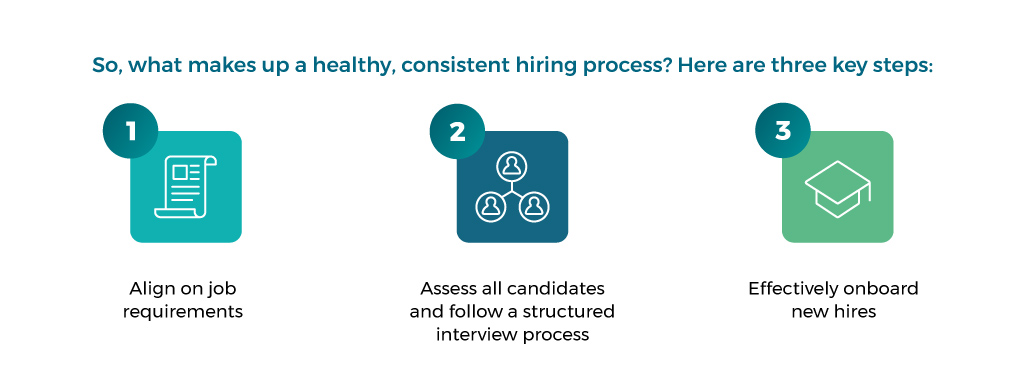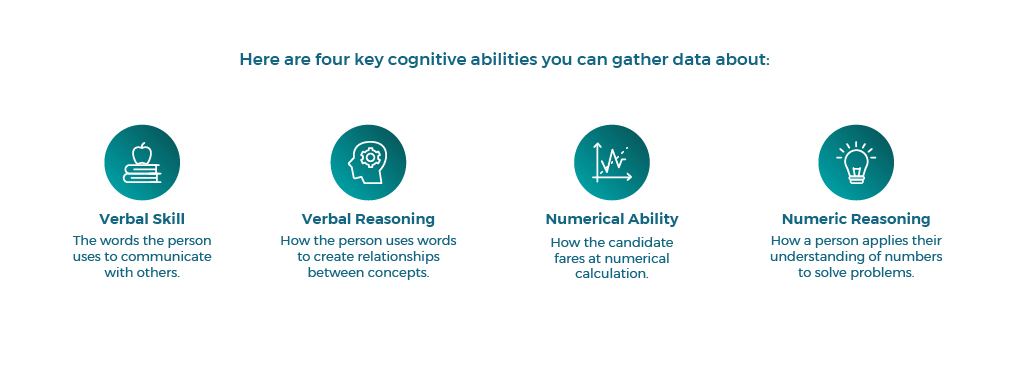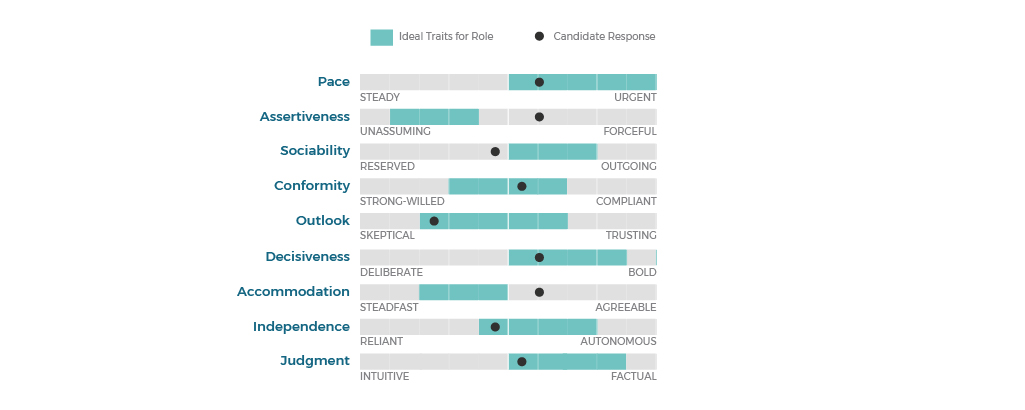Posted by on March 29, 2023.

Hiring managers strive to ensure their hiring process is fair and structured but are too often surprised by messier outcomes than expected.

The same survey found that:
 Relying so heavily on instinct tends to crowd out other insights that truly do lead to better hires. Too much emphasis on instinct means too little consistency and real structure in the hiring process. Instinct alone can mislead your hiring managers; this is why consistency in the hiring process is essential. Finding the right hires starts with data, and we’re here to show you how.
Relying so heavily on instinct tends to crowd out other insights that truly do lead to better hires. Too much emphasis on instinct means too little consistency and real structure in the hiring process. Instinct alone can mislead your hiring managers; this is why consistency in the hiring process is essential. Finding the right hires starts with data, and we’re here to show you how.Driving Consistency in the Hiring Process

These steps may seem straightforward, but you may be surprised to learn how often they are missed in the hiring process. For instance, PXT Select surveys have found:
- Over half of all hiring managers don’t always align with recruiters on the job requirements for open positions.
- Two out of five said candidates aren’t always assessed with a structured interview process.
- More than two-thirds admit that their organizations don’t always onboard effectively.
Altogether, fewer than one in five companies perform these three steps in each hiring situation. And yet, consistency is vital for selecting the best candidate. Your hiring managers need to be able to make apples-to-apples comparisons by following a consistent approach that covers all candidates and everything involved in the hiring process.
Digging into the Data
PXT Select surveys found that hiring managers who were most confident in their processes relied more on data than instinct. Data, of course, includes the usual stuff: job skills, experience, and education. But what other kinds of data about potential hires can be helpful? What would be beneficial to learn that doesn’t fit on a résumé or isn’t discussed in an interview?
This is where a Job Fit assessment, like PXT Select, comes into play.
These data-driven assessments help you consistently measure and better understand what core characteristics are needed to succeed in a particular role and how candidates compare against your requirements. Candidates are measured in three key areas:
- Cognitive abilities or thinking style
- Behavioral traits
- The candidate’s interest in a job and work environment
Establishing Job Fit helps you place candidates into positions where they’re likely to do well and perform at their full potential. Learn more about the powerful concept of Job Fit, which we discussed in depth in our last blog post, The Cost of a Bad Hire, And How to Avoid It.
Keep in mind that none of this data should come with judgment attached. It’s not good or bad, just information about the person that you can then compare with the requirements of the role to see how good the fit may be.
Let’s Take a Deeper Look at Each of the Three Key Areas:
Assessing a Candidate’s Thinking Style
This refers to data about a candidate’s cognitive ability and how they analyze and communicate information.
Gathering this data requires testing the candidate’s core learning concepts, their base knowledge of vocabulary and numerical concepts, and how they apply that knowledge in the workplace. How well can the candidate solve problems? Draw conclusions? Communicate knowledge to others?

Assessing a Candidate’s Behavioral Traits
Behavioral preferences help shape what a candidate is like on the job. We’re not talking about “good behavior” or “bad behavior” in the way that comes to mind when thinking about how kids act at school. In this case, we’re talking about traits that vary and are reflected as strengths or areas to develop that ultimately determine workplace behavior.
Each candidate lands between two ends of a spectrum, and neither direction is inherently right or wrong. The idea is to learn what candidates bring to the table, their level of awareness, and how willing they are to work with or past their traits.

Assessing a Candidate’s Interests
People are usually most satisfied and motivated when their job matches their interests. Here are six different ways you might characterize candidates’ interests:
- Creative: Imaginative, artistic, and interested in designing things.
- Enterprising: Often enjoys leadership, presenting ideas, and persuading people.
- Financial/administrative: Is a numbers person and is process- and detail-oriented.
- People service: Enjoys collaboration and helping others.
- Mechanical: Likes to build or repair things.
- Technical: Enjoys interpreting complex information and solving abstract problems.
To learn more about the power of assessment data and how to implement it in your hiring practices, download our new eBook, Hiring Successfully For Dummies, PXT Select™ Special Edition. It’s your guide to mastering the art of Job Fit, helping you make data-driven hiring decisions that deliver results.
